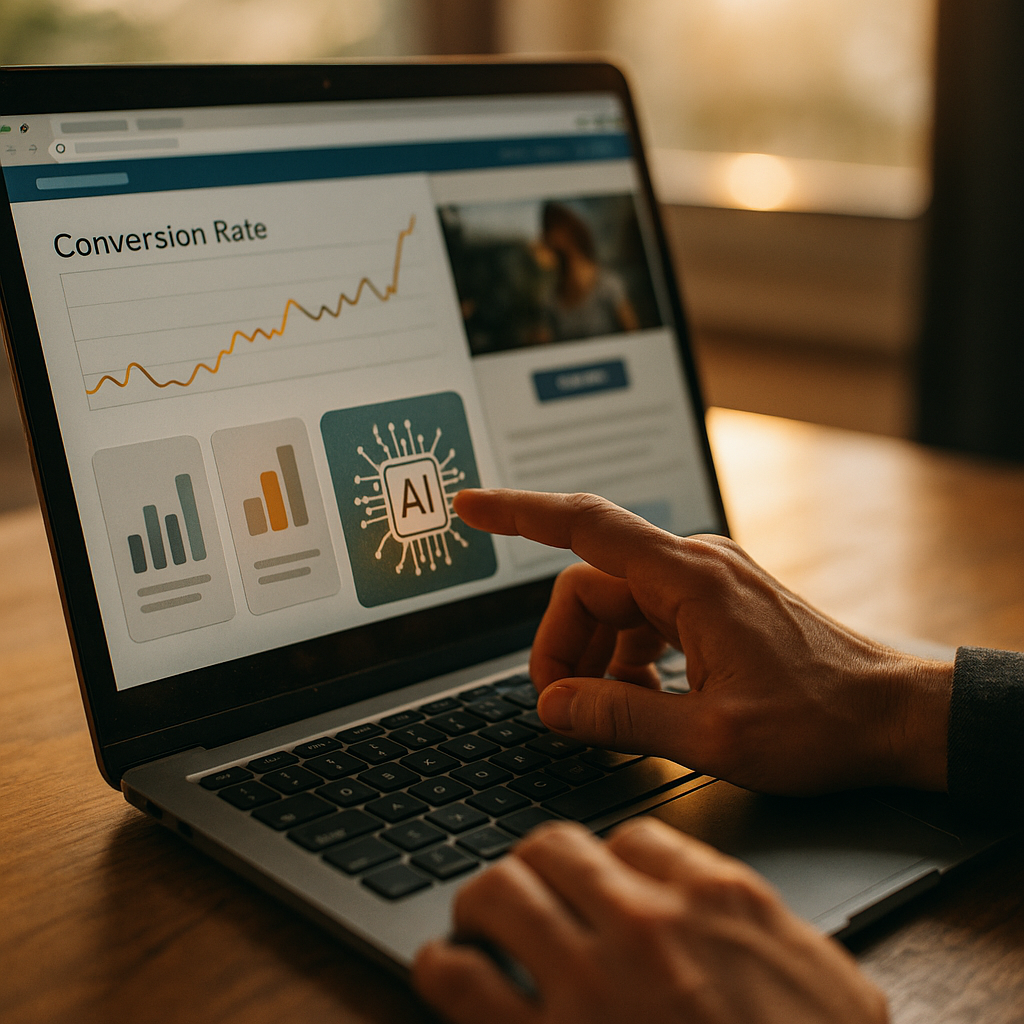Using AI to personalize your website pop-ups and lead capture forms can dramatically increase conversion rates and boost user engagement. As online competition grows fiercer in 2025, businesses must tailor user experiences to stand out and succeed. Discover how AI-driven personalization unlocks new possibilities for lead generation, customer satisfaction, and long-term growth.
AI-Driven Pop-Up Personalization for Higher Engagement
Personalized pop-ups leverage artificial intelligence to analyze user behavior and intent in real time. Unlike traditional, static website pop-ups, AI-powered versions adapt messaging, timing, and offers based on individual visitor profiles and interactions. According to a 2025 Salesforce report, websites deploying personalized pop-ups see up to a 51% increase in click-through rates compared to generic messages.
AI identifies key factors such as:
- Visitor referral source and browsing history
- Time spent on page and scroll depth
- Geographic location and device type
- Past interactions or purchases
This data enables brands to create genuinely relevant and non-intrusive pop-ups that capture attention without annoying users. The result is a more meaningful user experience that nurtures leads from the very first interaction.
Optimizing Lead Capture Forms with Machine Learning
Lead capture forms are foundational to online marketing, but long forms often deter submissions. Integrating machine learning into form design solves this by adapting dynamically to each user. AI considers user profiles to:
- Shorten forms by pre-filling known fields
- Ask only the most relevant questions
- Trigger progressive profiling over multiple visits
- Predict and address drop-off points in real time
This hands-on optimization results in frictionless forms that significantly lift completion rates. For example, businesses leveraging AI-assisted forms in 2025 report up to 38% higher submission rates, as confirmed by HubSpot’s latest lead generation study.
Increasing Conversion Rates with Hyper-Personalized Offers
Using AI to personalize pop-up offers ensures each visitor receives the most enticing incentive at the perfect moment. Machine learning algorithms segment users based on their engagement levels, purchase history, and even psychographic data collected from on-site and off-site sources.
Top-performing strategies include:
- Displaying first-time visitor discounts triggered by exit intent
- Delivering loyalty rewards to returning customers
- Suggesting downloadable resources tailored to user interests
- Utilizing urgency messaging rooted in live inventory or real-time demand
Hyper-personalized offers foster trust and urgency, moving potential leads smoothly through the marketing funnel. B2B and B2C brands alike are seeing ROIs rise as a direct result of this approach in 2025.
Collecting and Protecting Data for Personalization
Effective AI personalization requires robust, ethical data practices. In 2025, users demand transparency and control. The smartest brands rely on first-party data, obtained with clear consent through analytics tools, CRM integrations, and purchase records. Privacy-centric personalizations foster trust while ensuring compliance with increasingly stringent global data regulations.
Key best practices include:
- Always securing explicit user consent for data collection
- Maintaining clear and accessible privacy policies
- Enabling easy opt-outs from tracking and personalized experiences
- Storing data securely using encrypted platforms
Prioritizing privacy builds the credibility and authority needed to win and retain leads in today’s environment, aligning with Google’s EEAT (Experience, Expertise, Authority, Trustworthiness) guidelines.
Measuring the Success of AI-Enhanced Pop-Ups and Forms
Continuous improvement is essential for digital success. Businesses tapping into AI for lead capture should monitor specific metrics to quantify impact and inform adjustments:
- Conversion rate: The percentage of visitors converting into leads via the forms or pop-ups
- Bounce rate: How many users leave the site without engaging
- Lead quality: The proportion of leads meeting qualification criteria
- User feedback: Direct visitor comments or survey responses on personalization efforts
Real-time AI analytics platforms offer actionable insights, allowing for rapid iteration. Tracking these measures ensures strategies remain data-driven and relevant as user behaviors and expectations evolve in 2025 and beyond.
Conclusion
Harnessing AI to personalize your website pop-ups and lead capture forms transforms visitor engagement and accelerates business growth. By combining ethical data practices with intelligent automation, you deliver user-first experiences that stand out in a crowded online landscape. Start integrating AI today to unlock your brand’s full conversion potential.
FAQs: Personalizing Pop-Ups and Lead Forms with AI
-
How does AI improve pop-up effectiveness?
AI analyzes visitor data in real-time to tailor messages and offers, ensuring pop-ups are relevant and less intrusive. This personalization significantly increases user interaction and conversion rates compared to generic pop-ups.
-
Is AI personalization compliant with privacy laws?
Yes, provided you use first-party data, obtain explicit user consent, and follow regional privacy regulations. Ethical implementation builds trust and aligns with best practices endorsed by leading authorities.
-
What tools can I use to implement AI personalization on my site?
Many platforms now offer AI personalization modules, including OptinMonster, HubSpot, and Adobe Target. Look for solutions that integrate seamlessly with your existing CRM and analytics stack.
-
What’s the most important metric to track for personalized lead captures?
Conversion rate is the primary metric, but also monitor lead quality and user feedback to ensure personalized forms attract the right prospects and provide a seamless experience.
-
Can small businesses afford AI personalization tools?
Absolutely. In 2025, AI-powered personalization tools are available at a range of price points, with scalable solutions for businesses of any size. Many offer free trials or entry-level packages suitable for smaller operations.
